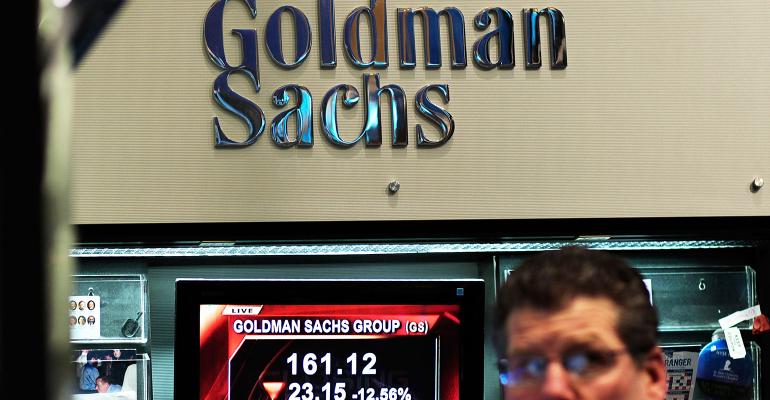By Christopher Anstey
(Bloomberg) --A prolonged bull market across stocks, bonds and credit has left a measure of average valuation at the highest since 1900, a condition that at some point is going to translate into pain for investors, according to Goldman Sachs Group Inc.
“It has seldom been the case that equities, bonds and credit have been similarly expensive at the same time, only in the Roaring ’20s and the Golden ’50s,” Goldman Sachs International strategists including Christian Mueller-Glissman wrote in a note this week. “All good things must come to an end” and “there will be a bear market, eventually” they said.
As central banks cut back their quantitative easing, pushing up the premiums investors demand to hold longer-dated bonds, returns are “likely to be lower across assets” over the medium term, the analysts said. A second, less likely, scenario would involve “fast pain.” Stock and bond valuations would both get hit, with the mix depending on whether the trigger involved a negative growth shock, or a growth shock alongside an inflation pick-up.
“Elevated valuations increase the risk of draw-downs for the simple reason that there is less buffer to absorb shocks,” the strategists wrote. “The average valuation percentile across equity, bonds and credit in the U.S. is 90 percent, an all-time high.”
A portfolio of 60 percent S&P 500 Index stocks and 40 percent 10-year U.S. Treasuries generated a 7.1 percent inflation-adjusted return since 1985, Goldman calculated -- compared with 4.8 percent over the last century. The tech-bubble implosion and global financial crisis were the two taints to the record.
Low inflation has prevailed in the current period, just as it did alongside economic growth in the 1920s and 1950s, according to the Goldman report. “The worst outcome for 60/40 portfolios is high and rising inflation, which is when both bonds and equities suffer, even outside recessions.” An increase in policy rates triggered by price pressures “remains a key risk for multi-asset portfolios. Duration risk in bond markets is much higher this cycle,” they wrote.
In the Goldman strategists’ main scenario of lower but positive returns, investors should “stay invested and could even be lured to lever up.” They suggested putting more in equities, with their greater risk-adjusted returns, and scaling back duration in fixed income.
Other findings in the report include:
- The exceptionally low volatility found in the stock market -- with the VIX index near the record low it reached in September -- could continue. History has featured periods when low volatility lasted more than three years. The current one began in mid-2016.
- Valuations have a “mixed track record” for predicting returns, explaining less than half the variation since 1900.
- Major draw-downs in 60/40 portfolios over the past century amounted to 26 percent in real terms on average, lasting 19 months. It took two years to get back to previous peaks, on average.
- Bonds are probably less good hedges for equities nowadays -- a point also made by Pacific Investment Management Co.
- Central banks “might not be able or willing to buffer growth or inflation shocks,” especially if they judge that imbalances and excesses are building. They also face fewer options to ease monetary policy given low rates and big balance sheets.
To contact the reporter on this story: Christopher Anstey in Tokyo at [email protected] To contact the editors responsible for this story: Christopher Anstey at [email protected] Robert Brand, Cormac Mullen





